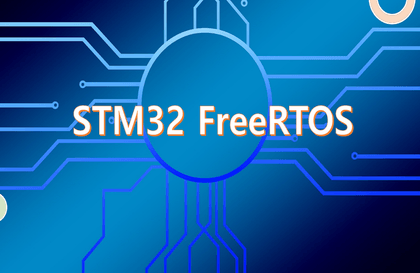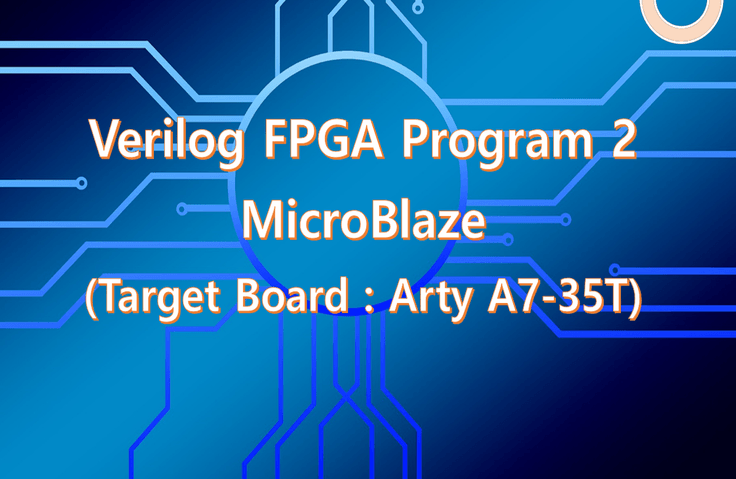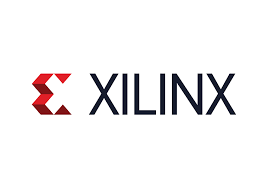
STM32 FreeRTOS 구현
alex
STM32 MCU에서 FreeRTOS를 구현하는 방법을 상세히 설명해 드립니다.
초급
FreeRTOS
This is about implementing MicroBlaze in Xilinx FPGA.

Using MicroBlaze in FPGA
Verilog program
FPGA programming
FPGA MicroBlaze is a daunting task to study!
You can get a lot of fun with this lecture 💪

Using MicroBlaze on Xilinx FPGAs!
MicroBlaze is a processor provided in IP form in FPGA. MicroBlaze separates the Processor Core and Peripherals, allowing users to configure the Peripherals according to their purposes.
There are many difficulties in dealing with FPGA. In order to implement FPGA, you need to have not only HW knowledge, but also a lot of understanding of the tools and Verilog syntax used. Porting and using MCU requires even deeper knowledge. Xilinx provides a lot of documentation on FPGA, but when you look at the documentation, there are too many cases where you are referred to other documents. Therefore, it is very difficult for anyone other than experienced developers to read and understand the documentation provided by Xilinx.
This lecture explains in detail how to port and use MicroBlaze on Xilinx FPGAs , starting from the process of installing the tools. How to port and use MicroBlaze , We'll walk you through implementing the interface between your user logic and the MCU in detail. Take your career to the next level with skills using MicorBlaze in FPGAs!
If there is anything you do not understand in the lecture, please post a question through the Inflearn community or the cafe I run and I will answer it.
📢 Please make sure to check before taking the class!

The lecture content is
Immediately applicable to practice!

Tested and proven
Open source provided!

Debugging, development required
Windows app program provided!

Designing FPGAs with Verilog
Someone with experience

Using the C language
Anyone who has tried FW

I'm interested in MicroBlaze, but
Someone with no experience
Section 1. HW Configuration
Section 2. Vitis 2022.1 Installation Process
Section 3. Print “Hello world” to the screen with MicroBlaze
Section 4. Peripheral of MicoBlaze
Section 5. Knowledge that can be applied in practice
Section 6. lwIP Echo Server
Section 7. Using lwIP
Section 8. TCP/IP Implementation Using W5500 Module
Section 9. Block Memory Interface - 1
Section 10. Block Memory Interface - 2
Q. Who is the target audience for this lecture?
This book is intended for those who understand Verilog syntax, have experience in FPGA design, and have experience in developing embedded systems (FW). However, even those with only a little experience will be able to understand it sufficiently if they follow the content exactly.
Q. Is there anything I need to prepare to attend the lecture?
This lecture will be conducted on the Arty A7-35T (100T, Digilent) practice board. If you do not have a board, please check the contents first and then purchase the board later and make sure to check it on the board. FPGA implementation does not end with simulation, but must be verified in HW.
Q. What program tools do you use?
We use the latest version, vitis 2022.1. The installation process is described in detail in this lecture.
I have been working as a developer for over 20 years in large and small companies and currently run a small business. I have developed an ISP(Image Signal Processing) ASIC for CCTV and many products using FPGA such as OLED inspection equipment and DAQ(Data Acquisition System). In addition to FPGA, I have a lot of experience in FW development (STM32, PIC32, AVR, ATMEGA, etc.), circuit design, Windows Program, etc.
Who is this course right for?
Anyone interested in MicroBlaze?
Anyone interested in FPGA
Anyone interested in Verilog?
Need to know before starting?
C language
Verilog HDL
Xilinx FPGA
1,733
Learners
78
Reviews
128
Answers
4.8
Rating
19
Courses
저는 지난 20여년 동안 대기업, 중소기업에서 개발자로 일해왔고
현재는 작은 기업의 대표로 있습니다.
주요 경력사항은
Verilog HDL을 이용한 FPGA 설계
CCTV용 ISP ASIC 개발 (약 10년)
OLED Display 검사장비 개발 (약 3년)
FPGA를 이용한 장비 개발
MCU FW
STM32
PIC32
AVR, ATMEGA
DSP (TI)
Windows Application Program
Visual Studio MFC, C++
입니다.
All
290 lectures
Course Materials:
All
5 reviews
5.0
5 reviews
Reviews 2
∙
Average Rating 5.0
Reviews 6
∙
Average Rating 5.0
5
Zybo 같이 아예 ARM이 내장되어 있는 경우가 아니라면, Microblaze로 개발하는 게 편합니다. 하지만 Microblaze를 활용하는 방법은 인터넷에 여기저기 퍼져 있어 구글링을 해 가며 공부를 해야 하고, 초보자가 그렇게 공부하면 무엇이 진짜 필요한 내용인지 구별할 수가 없는 것 같습니다. 하지만 이 강의는 Microblaze를 활용하기 위한 기본적인 지식을 함양해 줍니다. 이 강의의 내용을 조금만 응용하시면 실무에도 충분히 활용 가능할 것입니다. 그리고 무엇보다 장점인 것은 필요할 때마다 바로바로 찾아서 복습할 수 있다는 것입니다.
진심어린 수강평 정말로 감사드립니다. 도움이 되셨다니 또한 감사합니다. 앞으로 훌륭한 개발자가 되시길 기원드립니다. 요즘에는 동영상 자료가 워낙에 많이 있어서 동영상이 편할수도 있고 장점도 많은 것 같습니다. 그러나 말씀하여 주신대로 반복해서 자료를 보고 싶을 때에는 문서가 좋은 것 같습니다. 문서는 어디에 어떤 내용이 있는지 바로 찾을 수 있기 때문입니다. 앞으로도 계속해서 유익한 자료 만들어서 많은 분들이 도움 받을 수 있도록 노력하겠습니다. 감사합니다~!!
Reviews 14
∙
Average Rating 5.0
Reviews 1
∙
Average Rating 5.0
5
금번에 Microblaze를 활용해서 프로젝트를 하고 있습니다. 인터넷에도 자료가 그리많지않고 실무적인 내용을 찾기가 많이 힘들었는데 많은 도움을 얻고 갑니다. 자료 만드신거 보니 많은시간 노력의 흔적이 느껴집니다. 암튼 너무 좋은 강의였습니다. 많은 분들에게 도움이 될거라 생각됩니다
수강평 감사드립니다. MicroBlaze 관련 프로젝트를 진행하고 계신다니, 프로젝트가 잘 진행되어 좋은 결과가 있길 바랍니다. 감사합니다~!!
Reviews 1
∙
Average Rating 5.0
5
지금까지 쉽게 설명이 되어 있어 어렵지 않습니다. 좋은 강의인 것 같습니다. 현업에서 FPGA Logic과 HW를 설계하고 있는데 요즘은 MB or NIOS 까지 Handling 할 수 있는 능력을 많이들 요구 하는 것 같습니다. 좋은 디딤돌이 될 것 같습니다. 앞으로도 좋은 교육 부탁 드립니다.
수강평 정말로 감사드립니다. 도움이 되신다고 하니 감사합니다. 세상이 너무 빠르게 바뀌는 것 같습니다. 기술도 너무 빠르게 변해서 이것도 해야 되고, 저것도 해야 되고 할 게 너무 많네요. 아무튼 진행하시는 일들 잘 진행되실길 바랍니다. 감사합니다 ~!!
$63.80
Check out other courses by the instructor!
Explore other courses in the same field!